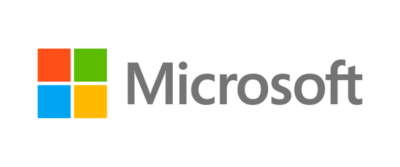The COVID-19 pandemic has sent shockwaves through societies and economies around the globe. These impacts have certainly changed the way we do business, and how we view our work; over the past two years, we’ve had to review the value of remote work, deal with labour shortages, tackle procurement and supply issues (from which we have yet to gain the upper hand), and more.
But all isn’t lost. These challenges have also served to expedite certain initiatives while encouraging us to review our practices and harness our creativity.
In Quebec, healthcare has been one of the most affected sectors. Yet, our healthcare system has undergone several improvements even though it was continuously in the spotlight during the past two years.
Here are a few examples of tech solutions that are shaping the future of healthcare.
Healthcare Software
Not so long ago, the fax machine was a central tool in most clinics and hospitals throughout Quebec. As a result, walk-in services and even appointment scheduling systems were outdated and frustrating to use.
During the pandemic, the health sector took the opportunity to fast-track its digital transformation. The introduction of Clic Santé highly improved appointment scheduling. What’s more, this online booking system was thoroughly tested during the COVID-19 vaccination campaign. Not to mention the overall management of the vaccination passport, which was quickly developed by Akinox, in collaboration with Uzinakod.
Telemedicine has also gained traction in Quebec. Thanks to the introduction of the Quebec Health Booklet and centralized health records, the use of paper (and the infamous fax machine) has greatly decreased without disappearing completely for the time being.
It’s also important to address the topic of healthcare data security. Indeed, IT solutions require continuous monitoring and frequent updates in order to counter potential cyber attacks.
Robotics in Healthcare
Robots are becoming increasingly common in the healthcare sector. For example, the use of a robotic arm can increase the autonomy people living with a disability. Certain robots are also used by surgeons during operations. Thanks to their increased stability and operating precision, these machines allow for faster and less risky interventions. This can also have a positive impact on a patient’s remission time.
Another branch of robotics also rose in popularity during the pandemic: nursing assistants. This is in fact the topic of my PhD thesis, which is currently in progress.
As is the case with many professions, there is currently a shortage of healthcare workers. With the outbreak of the virus, demand increased while employees became infected. These two factors unfortunately exacerbated the problem.
But how can we effectively deal with these challenges? One solution could be to introduce robots capable of performing certain repetitive tasks, such as serving food, disinfecting rooms and taking a patient’s vitals. This could alleviate nurses’ workload and allow them to focus on the human side of their work.
Other robots are sometimes used to welcome patients and visitors. They give people direction inside the hospital, can answer certain questions and even schedule appointments!
While these types of robots already exist, the cost of such technology is considerable.
Artificial Intelligence in Healthcare
Artificial intelligence is also becoming increasingly prevalent in the healthcare sector. It can now help doctors diagnose certain illnesses, mainly by analyzing X-ray images.
In certain countries, AI operators have already been implemented in 911 call centres. The system generates a realistic voice and can, in certain instances, provide assistance that goes beyond human capabilities!
That’s because artificial intelligence solutions make use of all available data (audio, call history and, when available, video). The robot may therefore be able to detect things that a human being couldn’t, such as faint respiratory sounds.
Like others, this solution also helps to alleviate the sector’s labour shortage in addition to improving quality of care.
IoT: Smart Technologies in Healthcare
I’ve already published a few articles on this topic (see suggested articles below). Nowadays, the IoT is found just about everywhere, but could it be implemented in the health sector?
The short answer is yes! There are, in fact, many possible applications, and some have already been put in place. Wearables, for example, are among the most common IoT technologies in healthcare. These include smart watches and clothes sensors (shoes, shirts, etc.), which can be used to collect and extract data pertaining to a user’s health.
This data can be used to monitor various health factors: sleep quality, heart rate, blood pressure and more. It’s therefore possible to prevent certain incidents by warning patients who show signs of a heart attack or other health problems.
Thanks to notifications and advice, health issues can be delayed or even inhibited, providing enough time for patients to consult their healthcare provider. One day, the IoT could even allow doctors to be proactive and meet with their patients to follow up on a notification issued through a wearable smart device.
Hospitals also use the IoT to locate equipment. Indeed, healthcare professionals often spend an unbelievable amount of time tracking down specific equipment, which could be easily traced thanks to a localization device.
Bed management could also be highly simplified. For example, if a patient leaves their room to have X-rays taken, the room cleaning can be done during their absence. At the risk of repeating myself, cleaning could even be performed by a robot! 🤖
Conclusion
As you can see, new technologies have a rightful place in the field of healthcare. However, their design is governed by strict regulations.
Certification from the relevant authorities (e.g., Health Canada) is necessary to ensure that the product is safe for patients. These rules are put in place to prevent the technology from causing additional issues.
The main challenge remains data security and protection against cyber attacks. Moreover, ethical aspects related to the use of robots and artificial intelligence algorithms raise important questions. The competent authorities are currently working on the use of AI in the health sector.
Once these criteria are validated and proven to be safe, the product can be used by the public to help improve quality of care. It may even have a positive impact on patient life expectancy.
At Uzinakod, healthcare technologies are one of our specialties. Our experts can assist you in both developing your solution and acquiring the correct certification. We implement effective security measures to ensure the protection of all sensitive and confidential data.
Contact us today to discuss your project and see how we can help you improve everyone’s quality of life!




